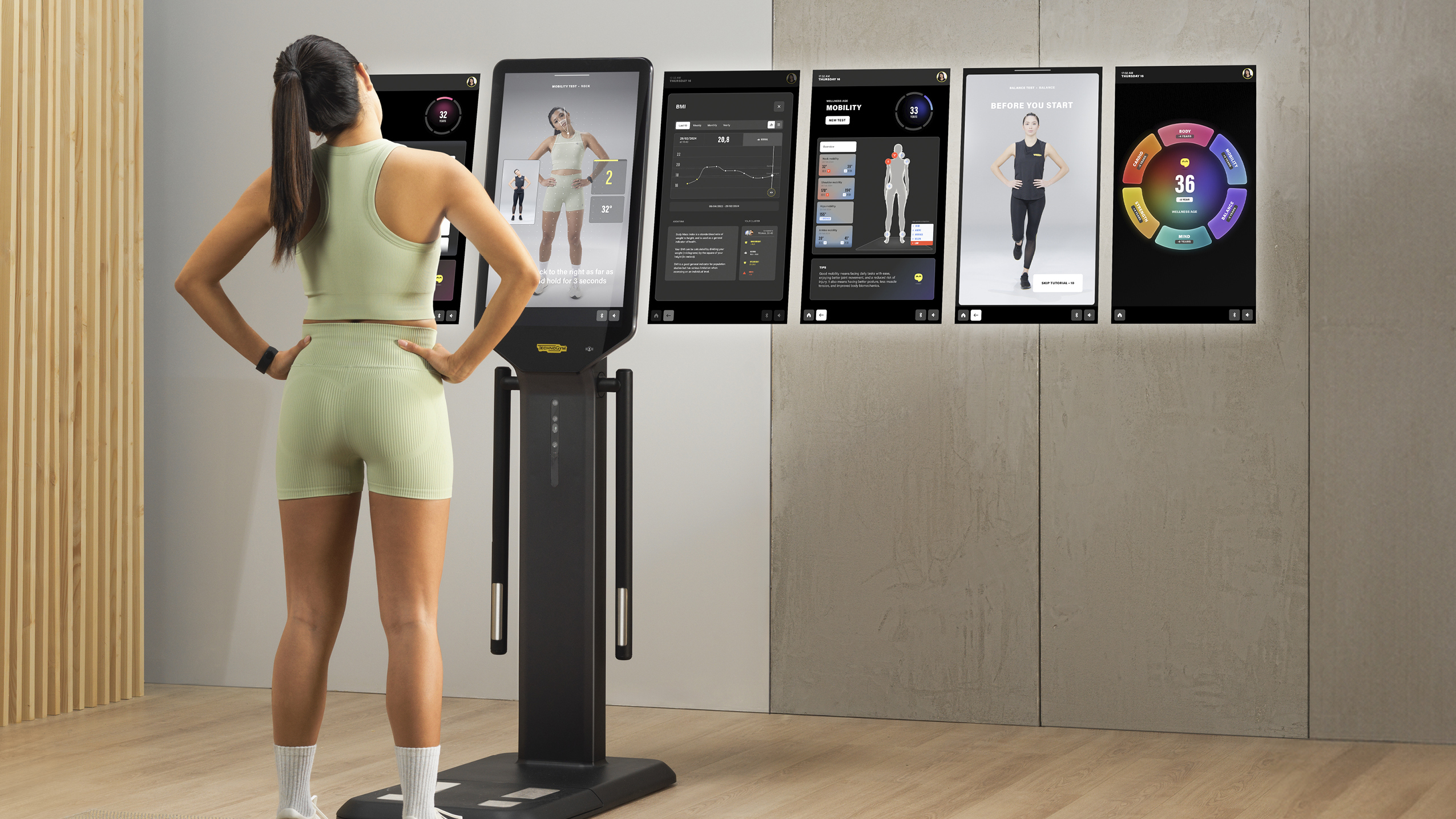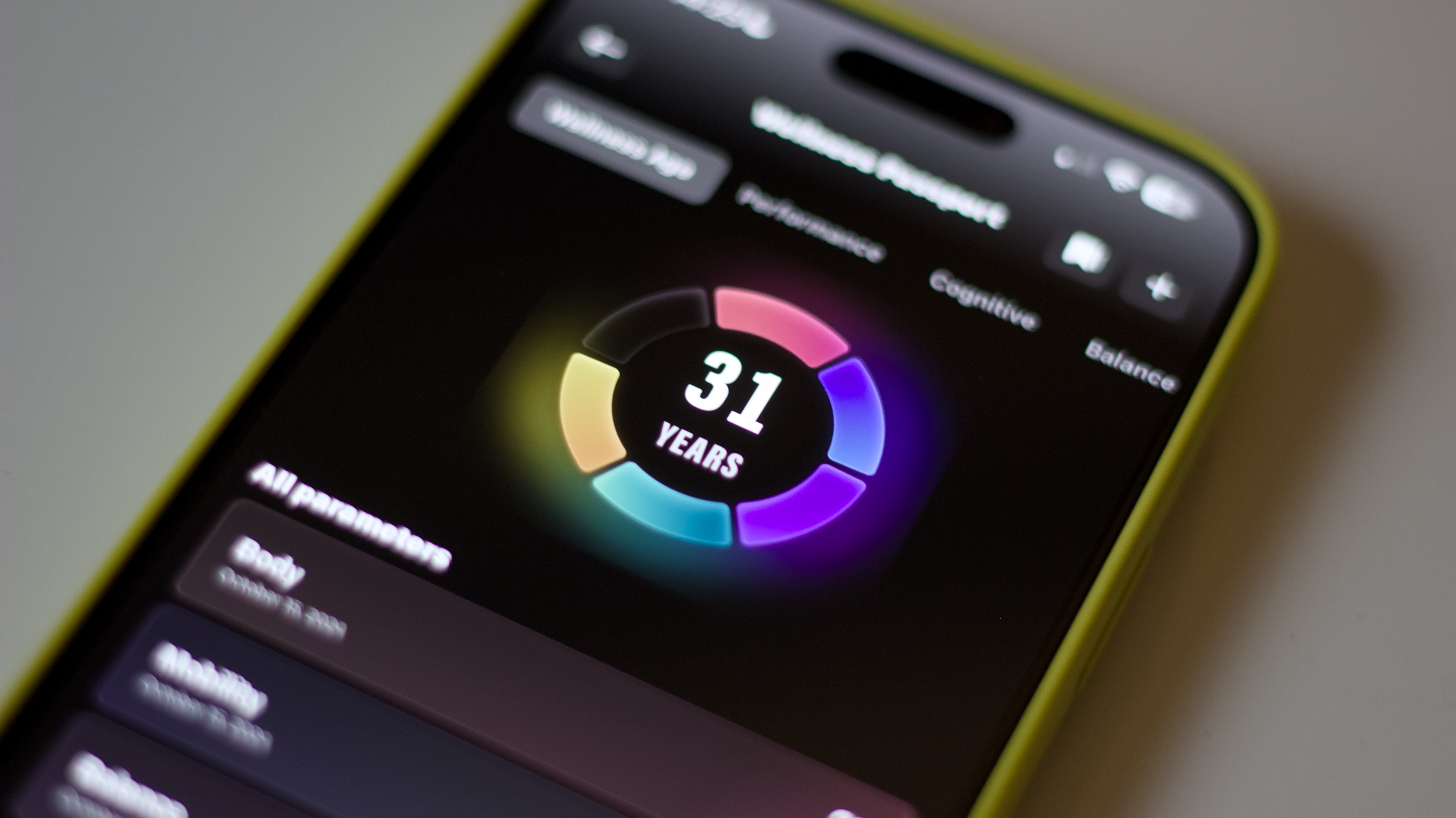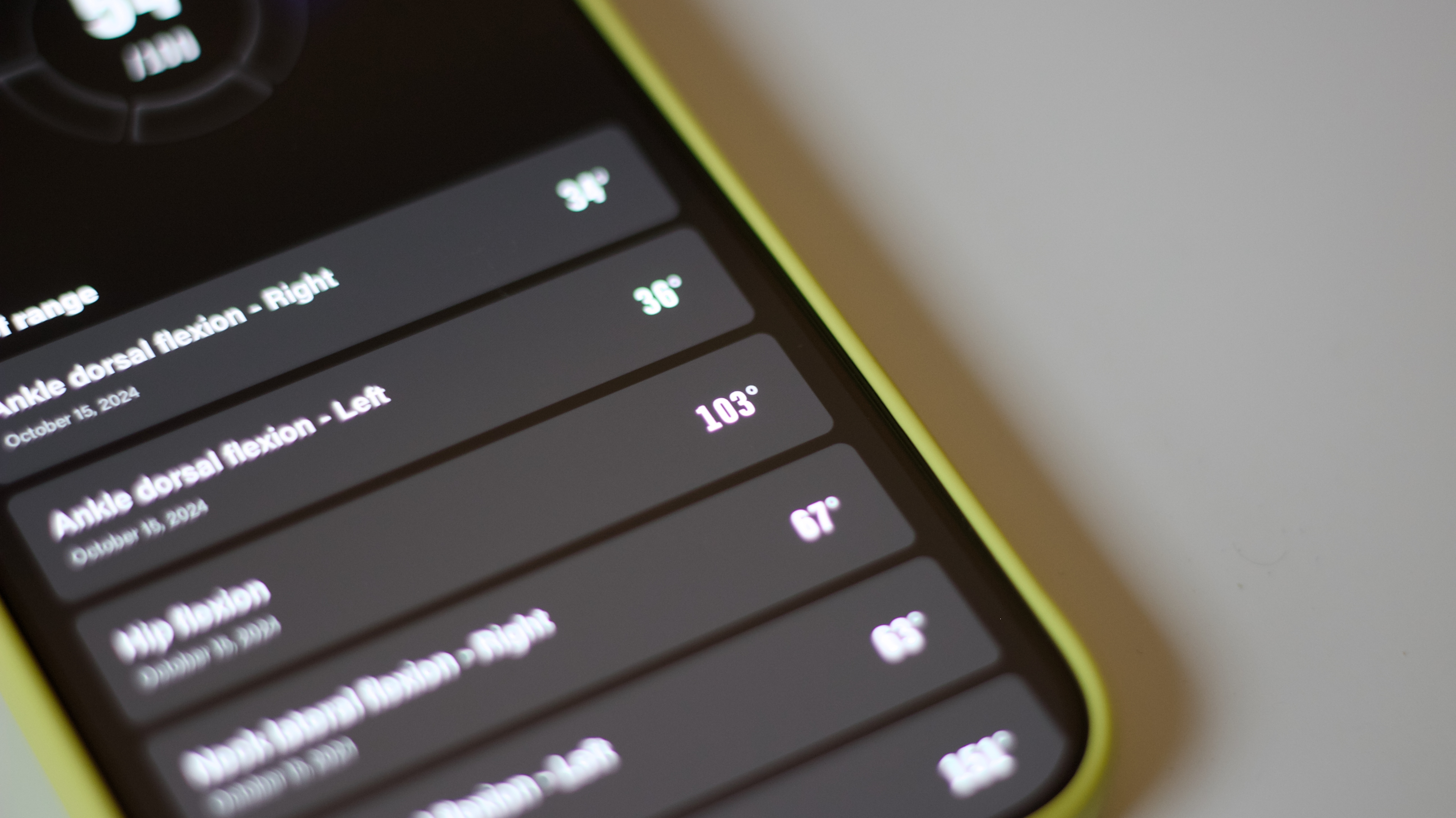
I grimace and wobble as the tiny white dot on the screen wanders beyond the bounds of the tracking target in the center of my chest, turning red as soon as it falls outside the circle. Seconds remain in the balance portion of my wellness test, and all the tendons in my ankle cry out for relief. After what seems like an eternity, I can finally put my other foot back on the floor and rest.
I’m in London to take part in Technogym’s new comprehensive fitness assessment, dubbed ‘Checkup’. I’ve had my mobility, mind, balance, strength, and body composition rigorously analyzed. The good news? I’ve got my first-ever Wellness Age, and it says that I’m 32.
The bad news? I am 29.
Technogym, a premium Italian manufacturer of sports and exercise equipment, has created the Checkup to serve as “a pivotal touchpoint in the Technogym Ecosystem”. Using advanced measuring tech and AI, it can assess the condition of both your mind and your body.

The Checkup is powered by a physical machine that looks like a cross between a McDonald’s self-service kiosk and K-2SO, the robot from the Star Wars film Rogue One. It has a marvelous array of sensors and cameras that can measure all the aforementioned markers of wellness, using AI to converge the data into a single metric Technogym calls Wellness Age.
The concept is quite simple, the better shape you’re in, the more likely your Wellness Age will reflect your true age, or better yet a body you’ve honed to look and feel younger than your trips around the sun would otherwise suggest. The best Garmin Watches and the Oura Ring 4 pack similar metrics, although these are done using wearables with limited sensors and largely focus on heart health.
Unlike those wearables, with Technogym, the Checkup is just the start of the process. Once you’ve got your results, Technogym uses its app to identify your wellness needs and set you specific, unique goals. With that data in hand, you can take to the gym and start powering your way to a younger Wellness Age.
Of course, Technogym’s Checkup and the AI-powered workout program that follows are designed to be used best within the Technogym ecosystem. You’ll find its gear is often a mainstay in hotels and premium gyms, notably destinations like the Ritz-Carlton or the Waldorf Astoria. But that doesn’t mean everyone can’t benefit from a good Wellness Age checkup. In fact, I’ve not even put together my personalized workout plan yet, but there are already a few things I’m shaking up in my routine right away based on my wellness score. Here's where I'm starting:
1. Mobility work

When you contrast my 100/100 strength score to my 54/100 mobility score, it’s clear that I’ve been neglecting my joints for far too long. Specifically, I was surprised to find my shoulder mobility didn’t even merit a “below average” mobility rating, clocking a dismal “low” instead. After years of trying to build muscle to the detriment of pretty much everything else, it’s high time I put some effort into my joints. What good is benching 235lbs if I can’t put my socks on in the morning?
There are a few options for this, Bowery Digital’s Stretching & Flexibility: Bend app for iPad for one, or even the Pilates section of Apple Fitness Plus. As it stands though, the only stretching I do is exaggerating my max lifts, so anything would be an improvement.
2. Bye-bye bilateral
I’ve probably worked out almost exclusively with bilateral movements – exercises that use both arms or both legs at the same time –for the past decade. Bilateral movements include exercises like a chest press using a barbell, dumbbell, or machine, a shoulder press, leg extension, and more. However, Technogym’s Checkup highlighted a couple of key discrepancies in my mobility and makeup that show some key imbalances in my body. For instance, my neck, ankles, and hips aren’t symmetrical when it comes to range of movement.
I’m going to be introducing more unilateral movement – exercises that only use one arm or leg at a time – into my training. This will help improve strength, balance, and mobility where I have particular areas of weakness, such as balancing on my left ankle as opposed to my right. Studies have shown that unilateral strength training can help address muscular imbalances, increase overall strength, and reduce risk of injury.
3. More fitness testing
The Checkup might have revealed some key weaknesses in my body composition and overall mechanical health, but it also revealed to me the importance of regular fitness checks.
Now that I'm making these tweaks, I'm going to keep track of my progress by doing more frequent and regular fitness tests. I found the Checkup both motivating and alarming, and it's given me a renewed focus when it comes to my pliability and mobility, as well as the balance of my workouts.
By doing more fitness tests, I’m really hoping to get more regular and precise guidance about whether or not the things I’m doing are working, and whether any aspects of my fitness are being left behind in my training. If a Fitness test can motivate me and give me a better sense of progress, why wouldn’t I do them more often? While I won’t be making regular visits to Technogym in Mayfair, my local gym has treadmills that can perform cardio tests like VO2 max, and pliability’s ‘mobility+flexibility test’ is a great way to keep on top of your joint health.
Plenty more to come
There are plenty more changes I hope to make going forward, and I can’t wait to see what Technogym’s app throws up for me once I’ve completed my testing and questionnaire, but until then, even the most rudimentary fitness test might give your fitness and workout regime the reboot it needs, it certainly has mine.
If you’re curious about Technogym’s Checkup, look out for stations appearing in a Technogym-powered gym near you very soon. If you don’t have that option, you might want to look into getting one of the best Garmin watches on the market, or another fitness wearable that offers wellness age functionality. They might not be as precise as a dedicated station, but many of the best smartwatches on the market now offer at least some insight into your overall health and well-being, sometimes defined as an age metric.







